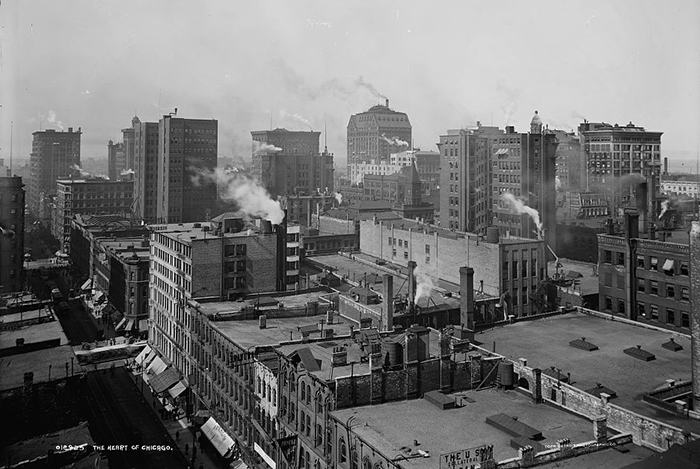Many Voices, One Nation is an upcoming exhibition in the Smithsonian National Museum of American History’s newly renovated Second Floor West Wing. The exhibition draws on four hundred years of interactions between diverse peoples living in the land that is now the United States and illustrates how those interactions continuously create and recreate the American experience.
It weaves together stories of voluntary immigration, forced importation, incorporation of people living on newly acquired U.S. lands, and internal migrations. With artifacts from the Smithsonian’s collections, along with others borrowed from institutions and private collectors, we want to create an exhibition that inspires in visitors an inclusive reconsideration of the American story.
Visitors will enter the exhibition at the point of contact between Native peoples, Europeans, and Africans in North America, and will follow the interactions of diverse people through a series of case studies set in the colonial period, the founding of the United States, and the nation’s geographic and demographic expansion.
A display of 1900-1965 Chicago called “Chicago—City of Neighborhoods” will be visitors’ first encounter with an urban landscape. It will showcase architectural elements from buildings in Chicago’s ethnic enclaves, using many objects (bricks, railings, decorative elements) borrowed from the private collection of Tim Samuelson, the city’s cultural historian. They provide striking, tangible entry points into the everyday accomplishments and struggles of people who occupied these buildings and spaces.
Samuelson describes the power of his objects as something beyond their physical footprints. “From a practical, rational standpoint, [I know] these are just inert physical objects, but I think they also contain a vibe of its collective existence,” he says. It’s the vibe that we are most interested in portraying.
“Chicago—City of Neighborhoods” focuses on the stories of five neighborhoods to explore how the city developed as millions of people from around the country and the world settled there. What follows is a preview of some artifacts from this section. These examples reveal how architecture can function as a gateway to human stories—to the vibe—of neighborhoods in evolution.
Bronzeville


The Kehilath Anshe Ma’arav Synagogue was built in 1890 on the south side of Chicago to serve a German Jewish community. Chicago’s famed architectural team of Louis Sullivan and Dankmar Adler designed the building. Adler had a personal connection; his father was one of the synagogue’s rabbis. Frank Lloyd Wright was an apprentice at the firm during the building’s construction and likely designed this Star of David element.
As thousands of African Americans migrated to Chicago from the rural South in the decades following the synagogue’s construction, many moved into this neighborhood that eventually became known as Bronzeville. The Jewish community moved to other parts of the city. The building then became the Pilgrim Baptist Church, an important fixture of the African American community. The Jewish star element remained on the church’s walls until a fire in 2006. It was in this church that choir director Thomas A. Dorsey is credited with developing a new musical genre, American gospel music.
Lakeview


Chicago’s Lakeview neighborhood was one of several hubs of the city’s long-established Swedish immigrant community. First built as a vaudeville venue in 1909, the Julian Theater in Lakeview started playing movies from Sweden with English subtitles in the 1930s. This plaster lion decorated the inside of the theater. Samuelson asks us to imagine this lion “vibrating to the voice of a young Ingrid Bergman speaking Swedish.” The community sustained a steady demand for Swedish films throughout the next decade. Through the act of attending events and viewings at the Julian, people from the neighborhood were able to express and experience nostalgia for their homeland. They also nurtured a continued connection to the language and people in Sweden.
Chinatown


In response to growing racism, Chicago’s existing Chinese community relocated to the South Side in 1912. The On Leong Merchants Association building, built in 1928, was long a symbol of the community and an active cultural center. The association also served as protector of neighborhood residents against growing anti-Chinese sentiment. The building was designed and built by two second-generation Norwegian architects. While the structure incorporated many Chinese design elements, it also has a strong grid-like configuration similar to the style of classic Chicago skyscrapers. By illustrating combined styles from China and Chicago, the building serves as a microcosm for immigrant identity and the active and engaged process of creating community space.
“Chicago—City of Neighborhoods” ushers the Many Voices, One Nation exhibition into the twentieth century. We hope these artifacts and the stories they tell will inspire visitors. We hope they will consider how their own communities have transformed over time, sometimes as a result of the settlement of new migrants. Tim Samuelson describes his artifacts as “silent witnesses.” In an environment that is constantly adapting to serve its occupants, these buildings are often the rare constants.
Lauren Safranek is the curatorial assistant for the Many Voices, One Nation exhibition project and curator of the exhibition section “Chicago—City of Neighborhoods.” Many Voices, One Nation is slated to open in the summer of 2017 at the Smithsonian National Museum of American History.


